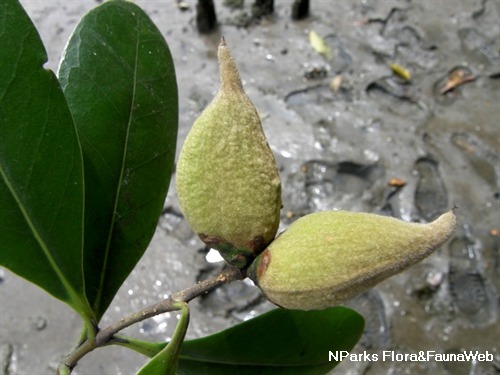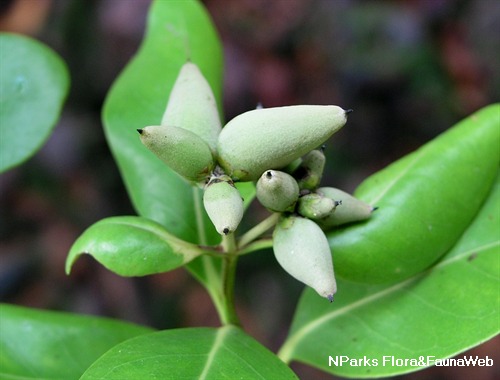
Back
Avicennia marina (Forssk.) Vierh.
| Family Name: | Acanthaceae |
| Synonyms: | Avicennia intermedia Griff., Avicennia mindanaense Elmer |
| Common Name: | Api-api Jambu |
Avicennia marina, also known as Api-api Jambu, is a mangrove tree. Unlike other species, the young branches of Api-api Jambu is distinctly square shaped. The fruit is greyish green with a short beak at the tip.
Name
Classifications and Characteristics
| Plant Division | Angiosperms (Flowering Seed Plants) (Dicotyledon) |
|---|---|
| Plant Growth Form | Tree (Big (>30m), Medium (16m-30m)) |
| Lifespan (in Singapore) | Perennial |
| Mode of Nutrition | Autotrophic |
| Maximum Height | 30 m |
Biogeography
| Native Distribution | South East Asia, including Singapore, Australia, New Zealand, East Africa, India, Pacific Islands. |
|---|---|
| Native Habitat | Shoreline (Mangrove Forest) |
| Preferred Climate Zone | Tropical, Sub-Tropical / Monsoonal |
| Local Conservation Status | Native to Singapore (Critically Endangered (CR)) |
Description and Ethnobotany
| Growth Form | Medium to large tree growing up to 30 m. |
|---|---|
| Trunk | Smooth, or slightly flaky grey trunk. |
| Roots | Extensive lateral root system stretching just below the soil surface with pencil-like breathing roots, also known as pneumatophores, sticking vertically out of the muddy ground to take in oxygen. Pneumatophores may grow up to a height of 15 - 20 cm. |
| Foliage | Elliptic or oblong-obovate leaves with a round tip, pale green lower surface and measuring up to 9 by 4.5 cm. Upper surface is covered with glandular dots. |
| Stems | Cross section of small branches or stems will show a characteristic square shape, unlike other Avicennia species which are rounded. |
| Flowers | Small, regular, orange to dark orange flowers measuring 5 - 8 mm, waxy surface, terminal flower clusters usually have about 2 - 12 flowers. Corolla has 4 equal lobes, ovary has a short style and a median ring of hairs that do not conceal the stigma. |
| Fruit | Light green in colour, ovoid in shape with a broad base and sharp apical beak, measuring about 2 cm across. All Avicennia spp. exhibits crytovivipary, in which the embryo germinates within the fruit but does not enlarge sufficiently to break through the fruit wall. |
| Habitat | Found on riverbanks, mouth of rivers, lagoons, rocky beaches and lower tidal areas. Avicennia species are usually pioneer species in newly formed mangrove forests. |
| Etymology | Api, means fire in Malay. This is usually associated to fireflies as they can sometimes be seen congregating around this species. |
| Ethnobotanical Uses | Edible Plant Parts : Edible Fruits Medicinal: Leaves are used to treat burns and bark resin is used as a contraceptive. Timber & Products: Wood is used to build houses, furniture, boats and firewood. Bark can be used for tanning leather. |
Landscaping Features
| Landscape Uses | Coastal, Riverine |
|---|
Fauna, Pollination and Dispersal
| Pollination Method(s) | Biotic (Fauna) |
|---|---|
| Seed or Spore Dispersal | Abiotic (Water) |
Plant Care and Propagation
| Light Preference | Full Sun, Semi-Shade |
|---|---|
| Water Preference | Lots of Water, Moderate Water |
| Plant Growth Rate | Moderate |
| Rootzone Tolerance | Moist Soils, Waterlogged Soils, Saline Soils / Salt Spray |
Foliar
| Foliage Retention | Evergreen |
|---|---|
| Mature Foliage Colour(s) | Green - Light Green |
| Mature Foliage Texture(s) | Glossy / Shiny, Leathery |
| Foliar Type | Simple / Unifoliate |
| Foliar Arrangement Along Stem | Opposite |
| Foliar Attachment to Stem | Petiolate |
| Foliar Venation | Pinnate / Net |
| Foliar Margin | Entire |
Floral (Angiosperm)
| Flower & Plant Sexuality | Bisexual Flowers |
| Flower Colour(s) | Yellow / Golden |
|---|---|
| Flower Grouping | Cluster / Inflorescence |
Fruit, Seed and Spore
| Mature Fruit Colour(s) | Green - Light Green |
|---|
Image Repository
Others
| Master ID | 32048 |
|---|---|
| Species ID | 6453 |
| Flora Disclaimer | The information in this website has been compiled from reliable sources, such as reference works on medicinal plants. It is not a substitute for medical advice or treatment and NParks does not purport to provide any medical advice. Readers should always consult his/her physician before using or consuming a plant for medicinal purposes. |

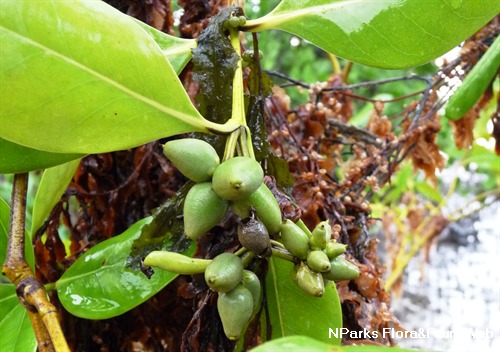
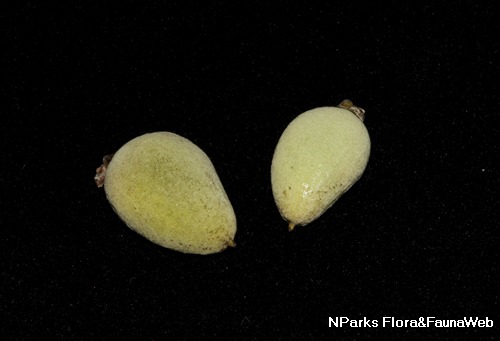
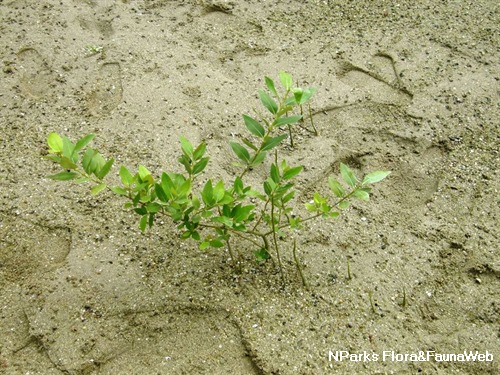
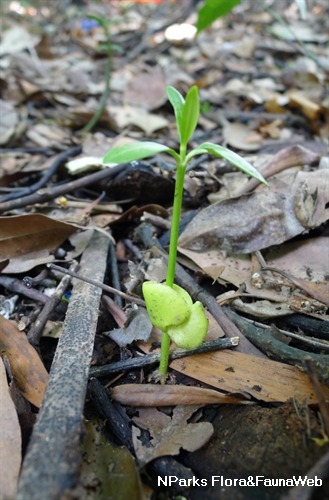
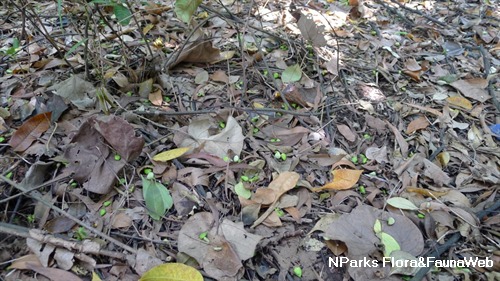
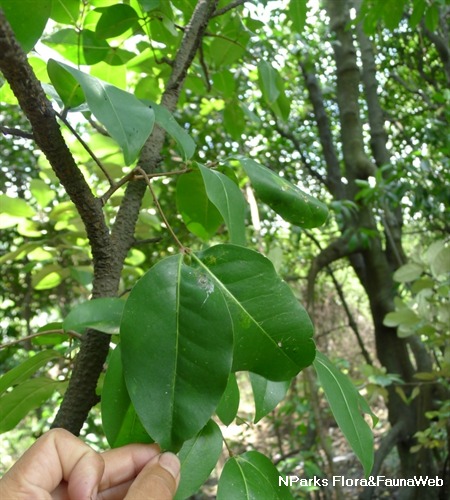
_lowres.jpg)
_lowres.jpg)
_lowres.jpg)
_lowres.jpg)


